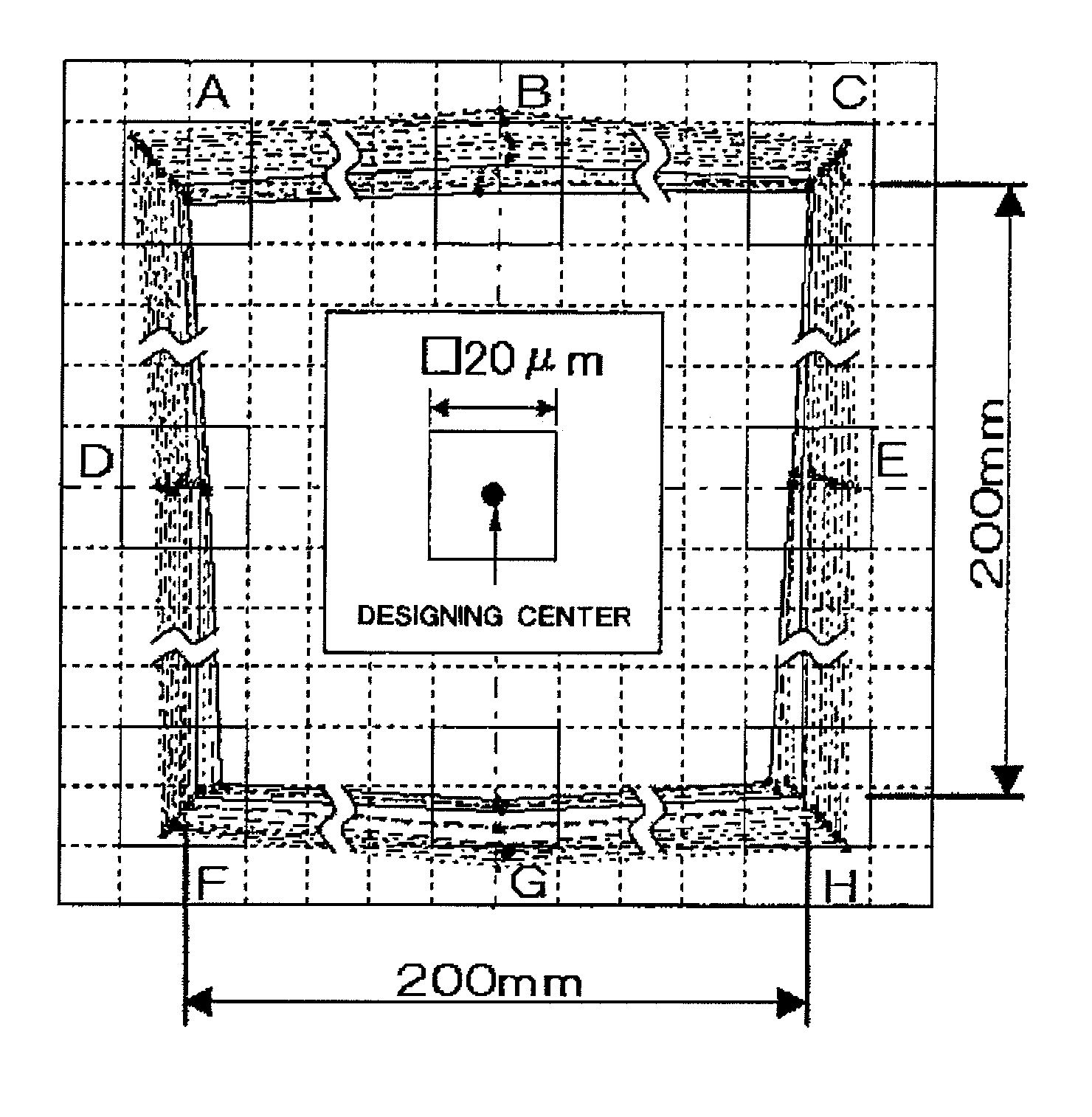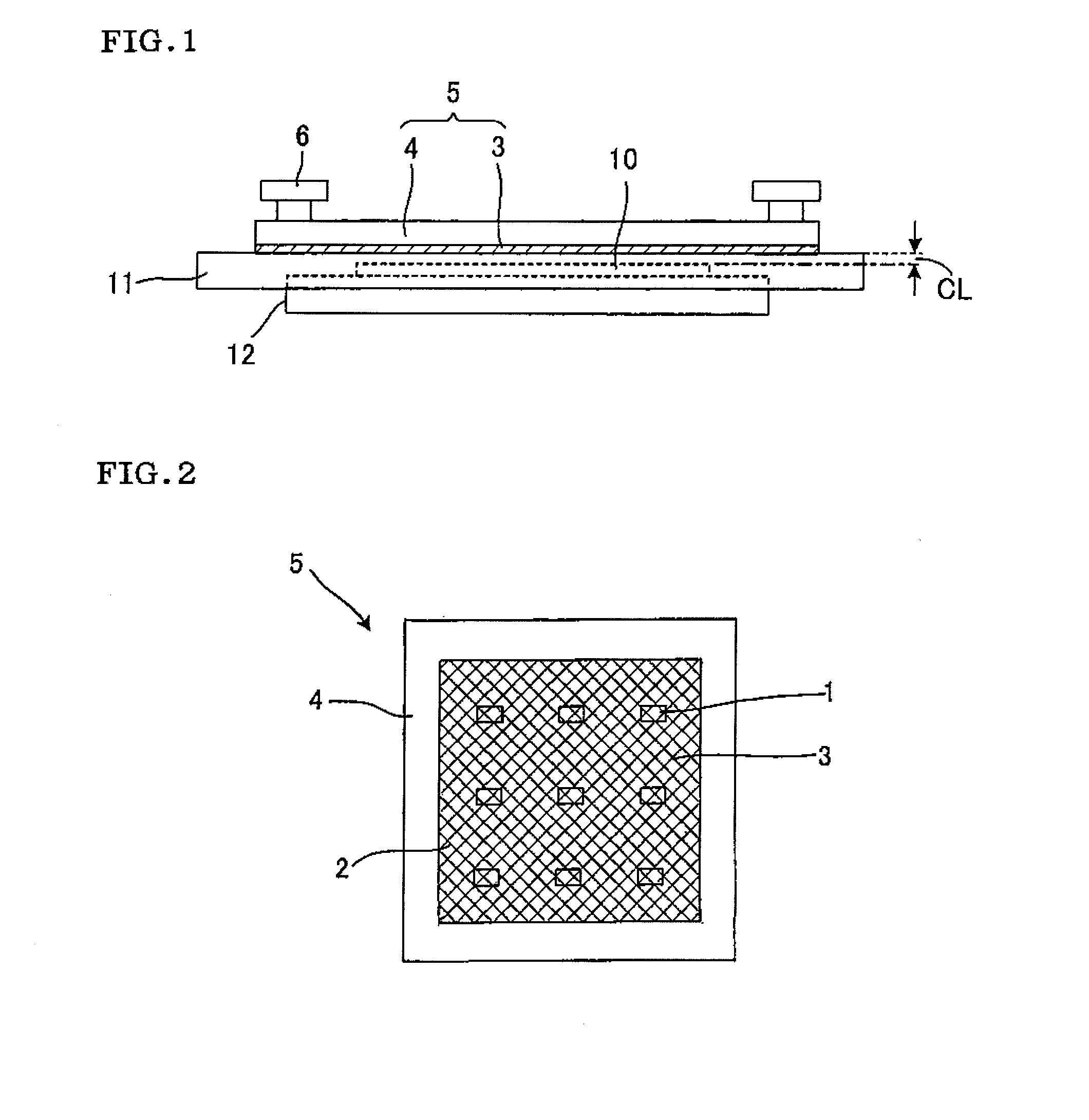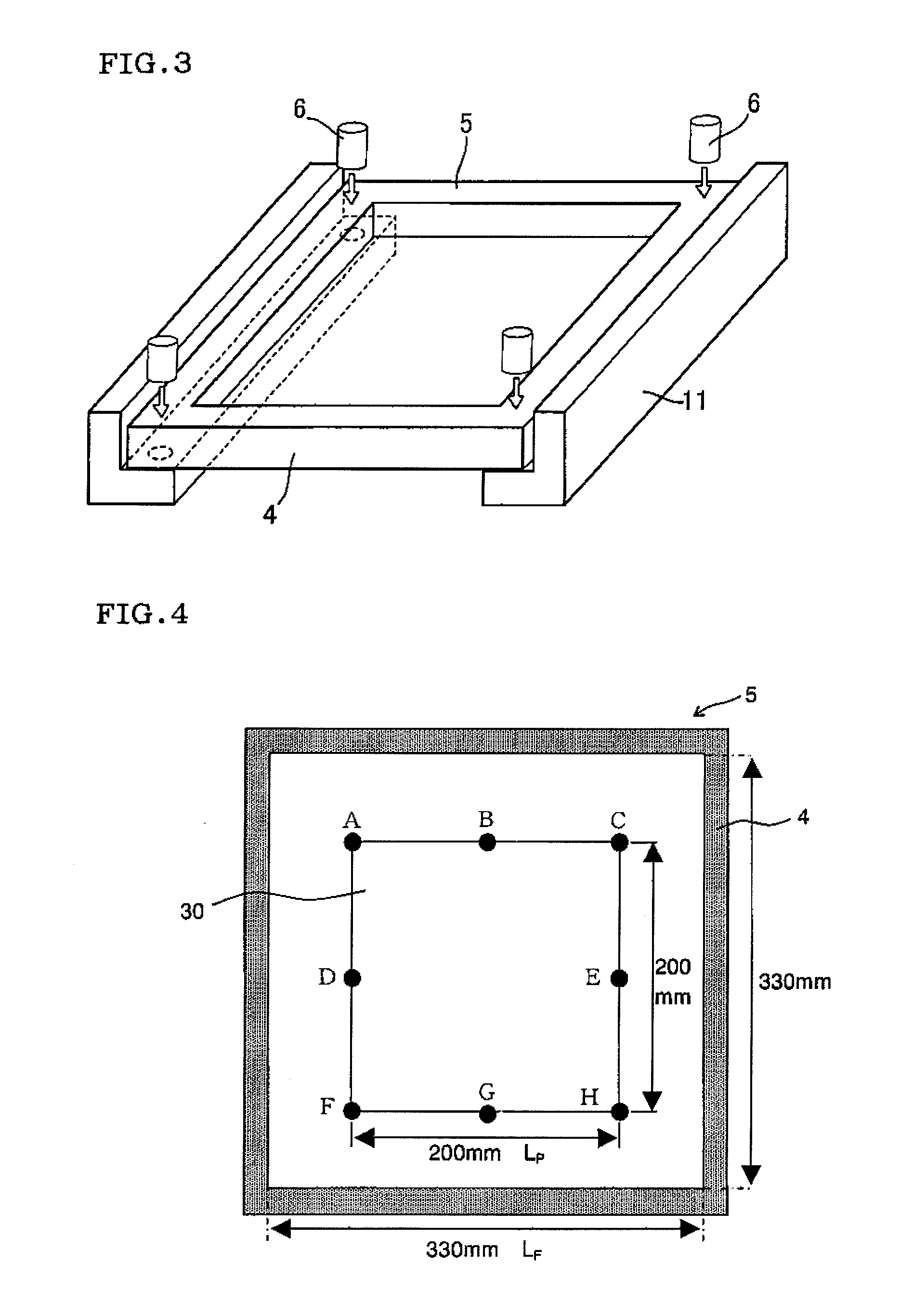Method for producing screen print
- Summary
- Abstract
- Description
- Claims
- Application Information
AI Technical Summary
Benefits of technology
Problems solved by technology
Method used
Image
Examples
example 1
[0074]Using a screen printing plate 5 of 330 mm×330 mm in internal size as shown in FIG. 4 (manufactured by Murakami Co., Ltd., size of print pattern to be formed: 200 mm×200 mm), clearance was set at every 0.1 mm within the range of 0.3-1.5 mm, and test printing was conducted with the respective clearances to produce thirteen trial prints according to the first selecting and setting method. The degree of deviation in printing position of the resulting first trial prints (degree of deviation from designing center) was measured. FIGS. 5-7 show graphs prepared by plotting the results of measurement. The degree of deviation in printing position (mm) was plotted against the respective clearances (mm) set above to prepare calibration curves shown in FIG. 8. FIG. 8 shows calibration curve (1) in the case of approximating in the cubic function (y=−0.0352x3+0.086x2−0.049x+0.0044).
[0075]Using a screen printing plate which was the same in design specification (lot) as the screen printing plat...
example 2
[0076]Screen prints were produced in the same manner as in Example 1, except that screen printing plates of different lots were used. FIGS. 10-12 show graphs prepared by plotting the results of measurement of the degree of deviation in printing position of the resulting screen prints. In FIGS. 10-12, the point of plotting the results of measurement of the degree of deviation in printing position of the second trial print is shown by a black triangle.
example 3
[0077]Using a screen printing plate 5 of 330 mm×330 mm in internal size as shown in FIG. 4 (manufactured by Murakami Co., Ltd., size of print pattern to be formed: 200 mm×200 mm), clearance was set at 0.5 mm and 1.0 mm, and test printing was conducted with the respective clearances to produce two trial prints according to the second selecting and setting method, and the degree of deviation in printing position was measured. The degree of deviation in printing position (mm) was plotted against the respective clearances (mm) set above to prepare calibration curve (3) shown in FIG. 13.
[0078]From the intersection point of the degree of deviation in printing position=0 (mm) and the calibration curve (3), the optimum clearance (about 0.58 mm) for the screen printing plate used for producing the trial print according to the second selecting and setting method was read, and screen printing was carried out using the screen printing plate used hereinbefore as it was with setting the clearance...
PUM
 Login to View More
Login to View More Abstract
Description
Claims
Application Information
 Login to View More
Login to View More - R&D
- Intellectual Property
- Life Sciences
- Materials
- Tech Scout
- Unparalleled Data Quality
- Higher Quality Content
- 60% Fewer Hallucinations
Browse by: Latest US Patents, China's latest patents, Technical Efficacy Thesaurus, Application Domain, Technology Topic, Popular Technical Reports.
© 2025 PatSnap. All rights reserved.Legal|Privacy policy|Modern Slavery Act Transparency Statement|Sitemap|About US| Contact US: help@patsnap.com



